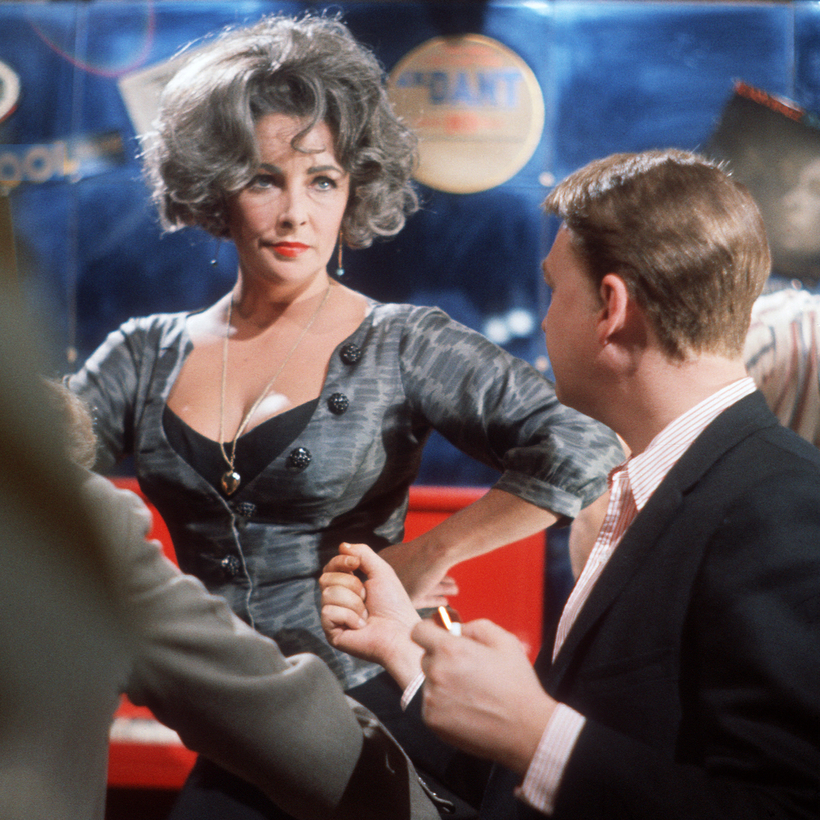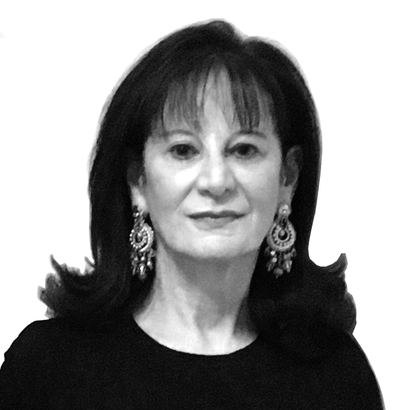A holiday flight to Los Angeles, the usual industry contingent in evidence, and Courtney B. Vance, a friendly acquaintance, notices that I’m reading the galleys of Philip Gefter’s Cocktails with George and Martha: Movies, Marriage, and the Making of Who’s Afraid of Virginia Woolf? He and his wife, Angela Bassett, he tells me, had at one point toyed with the idea of doing Edward Albee’s play together, but worried about the strain it could put on their marriage.
Anyone who has seen the work that first carpet-bombed American cultural complacency in 1962 would know what he meant. Uta Hagen and Arthur Hill starred in the original Broadway production, which so shocked, shocked, Kennedy-era polite society that it ran for 664 performances and won a Tony and almost a Pulitzer, until a voter vetoed it over its “filthy language.”

The movie that followed four years later packed an even greater wallop, as the “most famous couple in the world,” Elizabeth Taylor and Richard Burton, slugged it out in an apparent on-screen précis of their own tempestuous marriage, reflecting and accelerating, as Gefter writes, the corroding image of American familial bliss seeping into the national consciousness.
If you think Marilyn Monroe wanted to be taken seriously as an actress, try Taylor’s aging herself into the much older Martha by gaining 30 pounds, hair streaked gray above an attempt at unflattering makeup, and a braying voice that snarls the gateway line (lifted from Bette Davis in King Vidor’s Beyond the Forest): “What a dump!” (Given his druthers, Albee would have cast Davis herself opposite a George played by James Mason.)

That Hollywood kingpin Jack L. Warner entrusted the high-profile project to a first-time film director was remarkable, and there were many times during the production process that he—loudly—regretted it. During postproduction he banned Mike Nichols from the studio lot altogether, forcing the editor, Sam O’Steen, to call his director surreptitiously to run the sound mixing past him.
But the movie, and the winds of change it channeled, now seem unimaginable without the complicated Nichols at the helm. Gefter tallies opinions: “Mike Nichols the genius; Mike Nichols the public figure; and Mike Nichols the shit,” tooling from star-studded party to star-studded party in his rented black Lincoln Continental convertible, leaving lesser mortals on the back lot to clean up after him. “I was a real snot,” he said with no apparent regret.
Gefter filters the limelight cast on, and by, iconic personalities into a kind of granular beam. Irradiating long-archived details, he interrogates monumentalized reputations up close, weighs the bad and good in a crumbling studio system, and explores the movie’s influences and origins. (There’s also an erratic tendency to place himself on a first-name basis with his subjects, which an editor should have resolved.)

Albee found the title for his play in words scrawled in soap on a mirror in a bar, and his warring academic couple gestationally in the the cold yet simmering environment of New England WASP privilege he was adopted into as an infant. Like George and Martha’s ghostly son, an only child, lonely and alienated, he flunked out of Trinity at 19 to head for New York. Gefter draws parallels with Nichols, the only son of German-Jewish refugees, whose name was changed from Mikhail Igor Peschkowsky, his childhood alopecia and brassy intelligence setting him apart. At the University of Chicago, he met Elaine May.
Gloria Steinem, another ex in his string of brains-meet-beauty girlfriends, suggested he shoot Who’s Afraid of Virginia Woolf? at Smith, where she’d gone to school, advice Nichols later rued as a reason the $7 million production ran almost $2 million over budget, and superfluous to the film’s claustrophobic melodrama. On the other hand, the decision to film in black and white was a bold move in Technicolor’s company town, winning cinematographer Haskell Wexler an Oscar (Taylor won her second) and leading Albee to dryly say, “I never understood why they had to shoot [the film] in black and white. I wrote the play in color.”

Albee wasn’t credited on the screenplay, either. When he first arrived in New York, he had headed straight for Greenwich Village and the gay haven it represented at a time when heterosexuality was still implacably enforced as the norm, and where his circle came to include (cue Maestro) Terrence McNally, John Ashbery, Aaron Copland, and Leonard Bernstein. The rave reviews for his first play, The Zoo Story, in 1960, made him an overnight success but also cast him into celebrity’s fishbowl. The subsequent triumph of Who’s Afraid of Virginia Woolf? was no match, Gefter writes, for the tide that had started to turn against Albee for his homosexuality.
Nichols acquiesced in the studio-sanctioned choice of Ernest Lehman to write and produce the film, setting up epic battles between them as Nichols kept editing Lehman’s dialogue to hew more closely to Albee’s.
The battles the studio feared with the National Catholic Office for Motion Pictures (N.C.O.M.P.) and its censors, however, never materialized. Nichols cleverly brought Jacqueline Kennedy to the N.C.O.M.P. screening; turning to him as the lights came back up, she said emphatically within earshot of a monsignor, “Jack would have loved this film.”

At the same time, Gefter queries the notion that Who’s Afraid of Virginia Woolf? was originally conceived as a play with gay characters. Instead, he references as its inspiration Marie Menken and Willard Maas, a perennially sparring married couple whose bohemian Brooklyn Heights free-for-alls counted Albee, a teaching colleague of Maas’s, among their regulars.
Andy Warhol (who partied with Nichols in Hollywood during the Who’s Afraid of Virginia Woolf? period) was there, too, and made the pair the subject of a short film. (It was Edie Sedgwick’s screen debut.) Warhol called it Bitch. Shot in 1965, as the duo went at it one drunken Sunday afternoon, it screened publicly for the first time on a double bill with Who’s Afraid of Virginia Woolf? at the Museum of Modern Art earlier this year. The revelation for the sold-out crowd was how boring it was. Nichols’s Who’s Afraid of Virginia Woolf? was, simply, a revelation.
Celia McGee is a New York–based arts-and-culture reporter. She writes regularly about books for The New York Times and other publications


